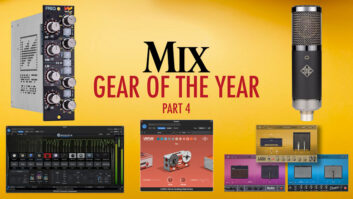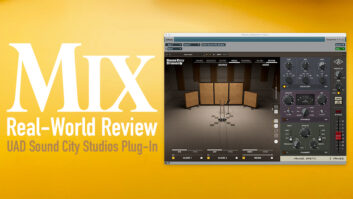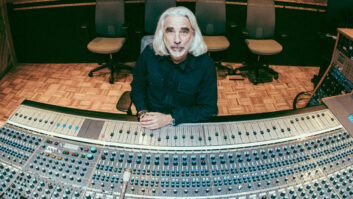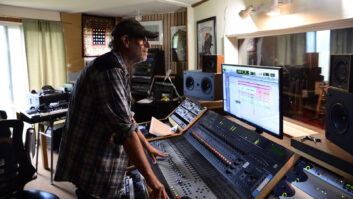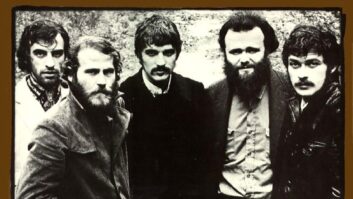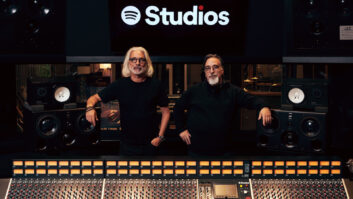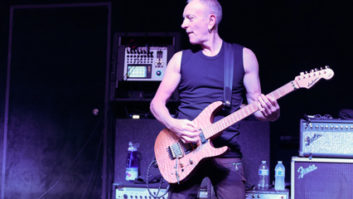The Right Instrument for Your Room and Your MusicMarvin Gaye and Tammi Terrell once sang “Ain’t Nothing Like the Real Thing.” Granted, they weren’t singing about pianos, but to many musicians, producers and engineers, that sentiment sums it up nicely. This article assumes you’ve already weighed the arguments for and against purchasing a bona fide, honest-to-God, real, acoustic piano vs. relying on a digital piano or library of piano samples. You’ve concluded that the expressiveness, uniqueness and aesthetics of a real piano outweigh the ongoing expenses of maintenance, tuning, and the additional investment in complementary microphones and preamps. Now it’s time to find the instrument that’s appropriate for your studio setting.
As with practically all acoustic instruments, every piano is unique. You’ll have to accept the fact that it’s highly unlikely that any one piano will be ideal for all musical situations. However, with a little forethought and research, it shouldn’t be too difficult to home in on the right set of ivories for your studio.
WHERE DO I START?The main style of music you and your clients record weighs in heavily on the type of piano best suited for your studio. Do you record mostly large orchestral ensembles and classical soloists? Are most of your sessions geared toward commercials, jingles or pop music? Do you deal mainly with rock music and/or creative artists who are more interested in recording interesting and unique piano sounds?
There are additional factors to consider, including the size of the physical space and the acoustic nature of the room surrounding the piano. Are you seeking a piano for upscale clients in a commercial facility with a large recording room? Will the piano be recorded in the main room or primarily in its own isolated piano lock? Are you in a project facility that can only accommodate an upright instrument in the corner of a small room? Is your recording space ambient or dead?
Clear answers to these questions will help you narrow down the multitude of options and choose the right instrument. The piano markets – both new and used – are nearly as overwhelming as the world of new and used guitars. Of course, your budget will further dictate your options; however, there are a lot of deals available for those open to financing or leasing an expensive instrument. We’ll also look at the used piano market, where there are great bargains to be found with a little research and legwork.
UPTOWNIf your recording facility specializes in film scores, orchestral recording, and traditional or classical recording, then you’re a prime candidate for a large grand piano. Assuming your recording space is large enough to accommodate large ensembles, you’re looking at least at a 7-foot grand piano to provide the depth of tone required for orchestral and solo piano recordings, and an instrument as long as nine feet is not out of the question (although the largest pianos are more commonly found in performance halls). Pianos by Steinway, Baldwin and Bosendorfer easily come to mind, and odds are that you and your clientele won’t be disappointed with the overall quality these brands offer. Pianos by Yamaha, Kawai, Fazioli and – my personal favorite – Feurich are also making more appearances in large U.S. recording facilities that specialize in traditional and classical styles, and they are gaining acceptance by both concert performers and classical engineers.
It must be noted that even two pianos that are identical in manufacturer and model can still sound very different from each other due to a range of factors, including setup and voicing, age, maintenance and even geographical location. I’ve found that Baldwin pianos, in particular, vary widely in timbre, action and actual volume output between exact models very close in age. Unless you are an accomplished pianist on the same level as the musicians who will be recording at your facility, you are best advised to have one or two discerning pianists you trust help pick the actual instrument before you make your investment.
A grand piano suited for traditional solo piano recording – which is usually acceptable for ensemble orchestral and some jazz recordings, too – should be rich in overtones, though not overly bright in timbre and crisp in action (as we have grown accustomed to hearing in pop, modern jazz and rock music). The voicing and action should be well-balanced from the low to high range of notes. You will also need to secure the services of a piano technician experienced in setting up pianos for classical performance to ensure the instrument responds appropriately to traditional repertoire.
More importantly, this piano should be free of any undesirable sonic anomalies that would be audible during very quiet solo passages. Don’t underestimate the importance of this last point. I’ve come across several pianos that were otherwise fine solo instruments but emitted subtle thuds, creaks or odd mechanical resonances that even the best technicians could not eliminate. These unfortunate blemishes prevented the use of these instruments for any truly great solo piano recording. Even though traditional and classical recording techniques usually place the microphones several feet away from the piano, be sure that any mechanical imperfections (which practically all pianos possess) are not audible when standing six feet from the instrument.
Most likely, a top-of-the-line grand piano intended for classical and traditional recording will cost you the most (easily upwards of $40,000 to $100,000) but will not be the most versatile choice for other styles of music. Because classical pianos tend to sound “darker” than pianos used for pop and rock styles, it’s hard to get a classical piano to “speak” enough for other genres. Even with EQ and compression, a piano designed for traditional music forms seldom creates satisfying tracks for rock and pop. In many upscale recording studios that need to host both types of sessions, the facility has two pianos. (One of the studios I worked in a lot during the early ’90s had both a 9-foot Bosendorfer and a 7-foot, 4-inch Yamaha.)
One last point on choosing a piano for traditional recording: Be sure to choose a piano that has all three pedals. Some smaller grand pianos, like the Yamaha G Series, don’t include the middle sostenuto pedal that is required for much Romantic and Impressionistic repertoire and is a necessity for many jazz pianists.
MIDTOWNMost commercial facilities have to accommodate a variety of sessions from day to day and don’t have a budget to invest tens of thousands of dollars in either a single piano that is not versatile or in the purchase and maintenance of multiple pianos. If your studio serves commercial, pop and rock sessions, then a piano with a brighter tone and faster action is desirable. Both new and used piano markets are full of instruments well-suited to the task.
By far, the most popular piano that is versatile enough for pop, jazz and rock recording, yet is arguably expressive enough for successful traditional and classical recording, is the Yamaha C Series grand piano. The 7-foot, 4-inch model is my favorite pop piano, with a bright tone, strong overtones and a moderately strong bass. I come across a lot of these pianos on the road, too, and find them to be very consistent. The Yamaha C7 is seemingly less affected by age and geographic location than other instruments; a well-maintained Yamaha C7 almost always produces satisfying recording and performing results.
That’s not to say that more traditional brands like Baldwin and Steinway don’t make pianos capable of pop and rock styles; it just requires more of a search to find one that sounds right. (In fact, certain successful rock and pop artists either require or travel with their own Steinway or Baldwin as part of their sound.) Oftentimes, adjustments to the hardness of the hammers and other modifications are necessary to achieve the desired timbre. Another point to consider is that several Steinway models have a shorter than average depth of key throw, making the action feel shallow compared to other pianos; this feature could be uncomfortable to many players.
In addition to Yamaha, there are several other brands of pianos that would make an excellent choice for a midsized studio, especially for those with a modest budget. Kawai, Feurich and Young Chang all produce models in various sizes that record well. Again, it is necessary to ensure that there are no audible mechanical anomalies in your piano that will compromise your ability to make fine recordings.
For studios with a varied clientele, I suggest choosing a grand piano no smaller than six feet, four inches long in order to guarantee solid tone with enough sustain to sound good in a lot of styles. Although grand pianos smaller than six-feet-long are great for living rooms and parlors, they generally sound even smaller than they actually are when recorded. I own a 6-foot Yamaha G Series grand that sounds pleasing enough for composing and recreation, but it simply doesn’t have enough tone and sustain to make great pop or rock recordings.
DOWNTOWNDon’t think you’re stuck with playing piano samples if you don’t have a studio or wallet large enough to own a big grand piano. There’s no rule that says you have to make that type of investment, especially if you own a small commercial or project studio. Depending on your clientele or personal style of music, an affordable upright or smaller spinet piano may provide the right sound for your recordings, especially for a lot of rock and alternative styles.
John Lennon’s “Imagine” and most of Jerry Lee Lewis’ early hits were recorded on upright pianos. Artists such as Ben Folds Five, Fiona Apple and Rufus Wainwright often employ baby grand pianos and uprights to create more of a sonically stylized sound, often using drastic EQ, compression and other effects.
If your sessions are more about style and personality than purity, then you’re really in luck. There are a ton of great small grand and upright pianos available that cost no more (sometimes less) than the average electronic keyboard. Most of the popular manufacturers of pristine, large grand pianos also make excellent uprights and baby grands. In addition to upping the cool factor of your studio, most upright pianos don’t take up very much space, and you get a composing tool that doesn’t need speakers, a computer or even electricity. If nothing else, just writing a song sitting at a real piano with your partner strumming an acoustic guitar is way more fun than auditioning loops on a CD or scrolling through presets on a synth module.
Don’t assume that, just because you’re “downgrading” to a smaller and less expensive piano, the resulting sound can’t be great. Uprights are actually easier to record than grand pianos and usually sound better than small baby grands. However, quality varies greatly in this level of piano, and you are still obligated to perform routine maintenance chores like tuning, voicing and minimizing any audible mechanical noises.
BEFORE YOU BUYThere are a few additional points to consider before finally choosing a piano. If the piano will stay in its own isolated room, or piano lock, then care must be taken not to overload the room with a piano that is too large and/or too loud for the size of the space. Just as speakers and amps can be overloaded, a room can be overloaded by SPL to the point that a clear recording is impossible, especially if the isolation chamber is excessively live in nature.
The overtones of the piano will also interact with the ambience of the room size. This interaction will affect the overall timbre of the piano and is best left to be adjusted by a qualified technician in the room where the piano resides. However, if your recording room is fairly dead, then be especially sensitive to the overall tonality of the piano. A dark-sounding piano in an acoustically dead recording space is a recipe for lackluster, wimpy piano recordings. By contrast, an overly bright piano in an extremely live room will sound very smeared and unfocused.
Once you’ve secured the appropriate piano for your studio, it will most likely need to be caressed into sounding its best for your particular environment. First, the instrument will need several days – possibly a couple of weeks – to settle into its new environment after its move. Changes in average temperature, humidity and altitude will affect the tone and response of the piano, especially if it is a large grand. These natural adjustments need to happen before you bring in a qualified technician to make any further tweaks to the piano’s response. Therefore, beware of technicians who advise you to drop off the piano to their location for the initial setup. Although they may argue that they can work more efficiently at their shop, your goal is for the piano to sound great in its ultimate home. A single piano move can affect the sound of a piano. A truly great technician tweaking the instrument onsite will be able to take into account all of the factors that affect the tone – room size, ambience, location, etc. – and ensure that the piano is at its best and ready for recording.
The tuning of the piano will also affect the tone of the instrument. If your sessions are orchestral, then the piano will need to be “stretch-tuned” more than for pop, jazz or rock sessions. In stretch-tuning, the lower notes are slightly flatter in relative pitch than the higher, sharper notes. This tuning method leans more closely to purer intervals than stricter “equal temperament” tuning. In equal temperament tuning, the intervals are less pure but more equally spaced. This makes an equal-tempered piano more in-tune with synths, samples, brass and woodwinds and is a more appropriate tuning method for pop, jazz and rock styles. Stretch-tuning has a more open, brighter sound than equal temperament, which somewhat compensates for the fact that pop pianos are typically much brighter overall.
If your studio specializes in rock music, then it is not necessarily a bad thing if the piano strings are a little on the dead side, especially in the case of an upright. Dead strings mean fewer overtones; fewer overtones means more fundamental. In a rock track with a lot of guitars, a piano sound with a lot of overtones can get buried. A piano sound with heavier fundamentals will cut through a track much better, usually with just a little help from some EQ.
In addition to piano retailers in your local area, there are a lot of resources available to those interested in buying and selling new and used pianos. All of the major manufacturers have excellent and informative Web sites. There are also several Web sites dedicated to connecting potential buyers and sellers.
MANUFACTURERSFazioli: fazioli.comFeurich: feurich.comKawai: kawaius.comSteinway & Sons: steinway.comYamaha Pianos:yamaha.com/pianos.htmYoung Chang America:youngchang.com/yca/home.html
OTHER WEB RESOURCESThe Piano Page: ptg.orgPiano World: pianoworld.comPiano Finders: pianofinders.comPianoMart: pianomart.comPianoNetwork: pianonetwork.comPianoOutpost: pianooutpost.com
